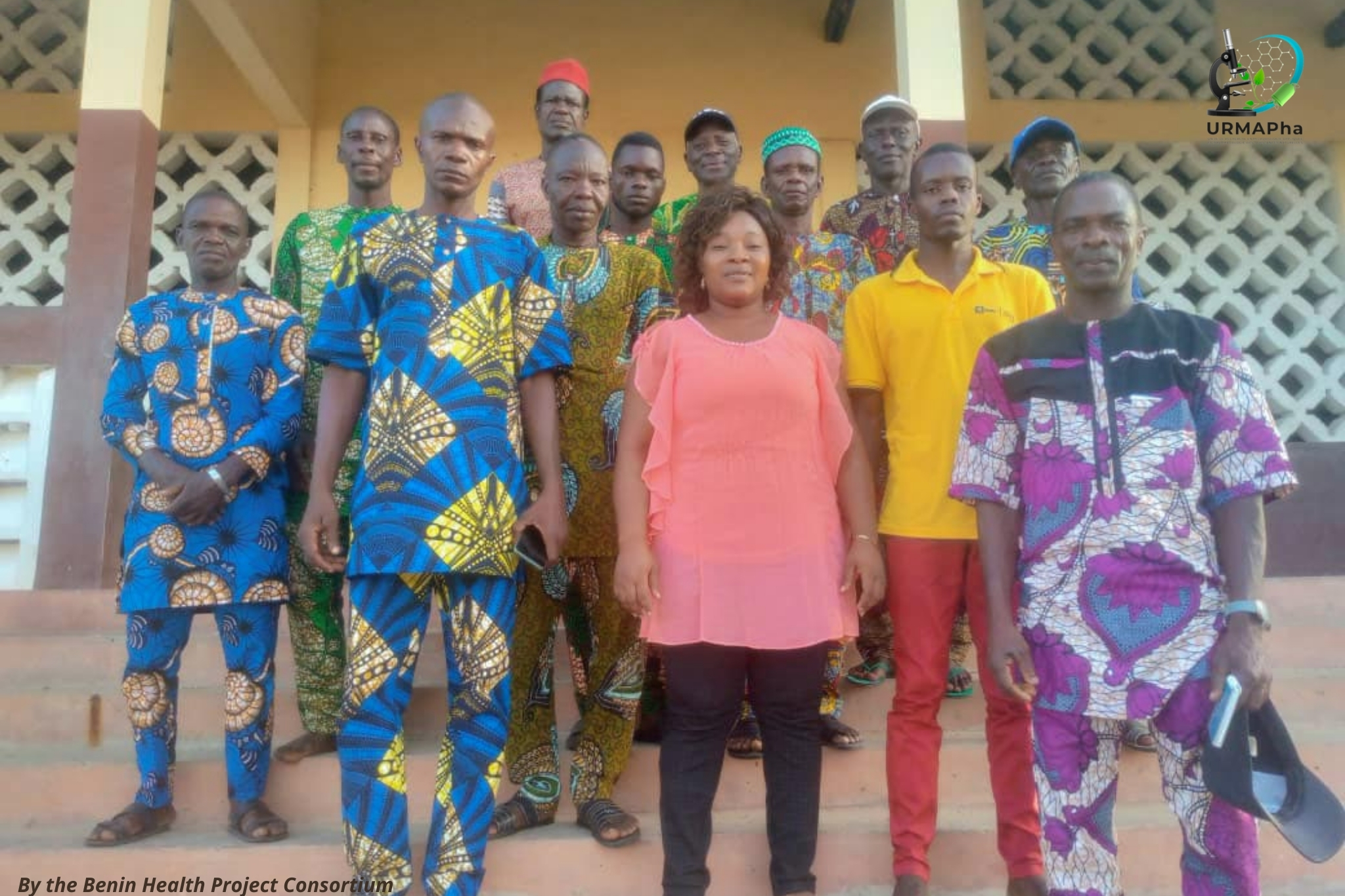From Lake Nokoué to Dantokpa Market: A No-Tech Solution for Climate and Health Resilience
Address structural inequalities
Build understanding
Collaborative action and investment
Devolve decision making
Invest in local capabilities
Organization: Research Unit in Applied Microbiology and Pharmacology of Natural Substances, University of Abomey-Calavi
2025 LOCAL ADAPTATION CHAMPIONS AWARD FINALIST
In the low-lying neighborhoods surrounding Lake Nokoué in Benin, homes are often built on stilts or perched precariously on flood-prone ground. When heavy rains come, they bring more than rising water. They carry contaminated runoff and the seeds of widespread disease.
The risks multiply in Dantokpa Market in Cotonou, the largest open-air marketplace in West Africa. More than 35,000 vendors, most of them women, sell food, fish, and daily necessities in close quarters where sanitation is limited and clean water scarce. When climate shocks hit, illnesses spread rapidly through the market stalls, threatening not just health but also livelihoods and the food security of entire communities.
Gastrointestinal disease outbreaks, skin infections, and mosquito-borne diseases like malaria are the most visible impacts. But behind these illnesses lies a deeper challenge. Families lose workdays, spend scarce resources on treatment, and carry the constant stress of not knowing when the next flood or outbreak will strike.
For decades, the typical response to such crises has come from the top down. Governments and institutions have deployed surveillance systems, sometimes dependent on internet access or centralized infrastructure. Yet for communities living on the water’s edge, these systems aren’t able to protect their health and well-being. What was missing was a solution that recognized the expertise of the people themselves, a system that worked with their daily realities rather than against them.
A No-tech Solution for Preventing the Spread of Illness
The solution put forward by the Research Unit in Applied Microbiology and Pharmacology of Natural Substances (URMAPha), University of Abomey-Calavi, and its partners was developed directly with citizens, from the women who manage households and sell food in the market to elders and community health workers. Together, they co-created a system that would allow them to detect danger early and respond before small threats became full-blown crises.
Unlike high-tech systems that depend on internet access or distant institutions, residents themselves watch for the signs. When the water turns cloudy, when unusual rashes appear, when mosquitoes seem to multiply overnight. These are the cues that something is shifting, and they form the foundation of the community-led early warning system. Once signals are spotted, community health relays and women’s groups step in. They spread the word quickly, activate local response protocols, and connect with municipal health officers if professional support is needed. The entire process is rooted in immediacy and trust. Neighbors warning neighbors, vendors alerting one another, and families mobilizing before illness spreads.
Training is a constant thread running through the project. Women’s cooperatives meet regularly to sharpen their ability to interpret changes in the environment, while health relays learn how to recognize the earliest symptoms of outbreaks. This knowledge strengthens their leadership and reinforces their role as protectors of community health. In parallel, safe spaces have been created where residents can talk about their fears, share strategies, and support one another. These gatherings not only prepare people for physical risks but also ease the mental strain of living with the uncertainty of climate change.

Community Health Relays serve as trusted intermediaries between formal health systems and local populations
Behind the scenes, governance is as participatory as the health protocols. Decisions about funding, whether for awareness campaigns, training, or supplies, are made openly in workshops attended by community members. Simplified budgets are posted in markets and gathering places so everyone can see how resources are used. The transparency builds trust, and the shared decision-making reinforces the idea that this system belongs to the community, not to outside actors.
From Market Vendors to Scientists: A System Built on a Robust Network of Collaboration
What makes this initiative especially powerful is the web of collaboration it has created. Women’s cooperatives and market vendors form its backbone, watching for risks and leading responses. Community health relays bridge the gap between households and formal health systems, ensuring alerts are credible and coordinated. Municipal health officers and local leaders align the effort with public policies, while national authorities provide institutional support. Partners, from the Benin Fisheries and Oceanological Research Institute to the Technical University of Denmark, support environmental monitoring and contribute scientific expertise in everything from anthropology to microbiology. Each actor brings something essential, and together they have built a system that is both scientifically rigorous and deeply rooted in everyday life and local wisdom.
What began as a pilot is now a living example of how communities, when trusted and equipped, can design protection systems that are practical, affordable, and resilient. It is more than an early warning system. It is a community-led approach to adaptation that puts people, their knowledge, and their agency at the center of the response to climate change.